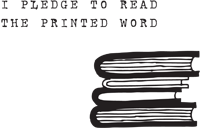 From introduction:
From introduction:"Emily Dickinson, then thirty-one years old, was writing a professional man of letters to inquire whether her verses 'breathed.'" (v)
I love that the introduction states, "... the early 1860's, when she fully developed her 'flood subjects' on the themes of living and dying." (viii) I've never heard that term before--flood subjects. I suppose mine, just now, are memory and much more so, the body (especially in aging).
"Dickinson uses dashes as a musical device, and though some may be elongated end stops, any 'correction' would be gratuitous." (x-xi)
In my independent study with poet Michael Dennis Browne, he has asked me to assemble an anthology of sorts of poems from the collected that speak to me in whatever way, perhaps ten or fifteen. It's difficult to narrow, and this is something I'm working on still--there are those whose language appeals, those that seem incredibly teachable or ready for discussion, those that call to me because I can relate in my own everyday life.
I'm halfway through and plan a big post with the poems that stood out to me in myriad ways, but I wanted to pause here, think about the feelings I've had as I've plugged away at this daunting tome.
At first, I was certainly not in love. I chose Dickinson because she seems the obvious first to fit my criteria, as discussed at the MFA retreat: American, female, foundational (canonical), inspirational to other poets, ready with a body of work, letters or diaries to read, biographies, a decent amount of critical study. Emily Dickinson, mama of American poetry. Oh, and the biggest criteria: I wanted to feel as if I ought to have done a close study of this poet's work already and hadn't--a gap in my education, so to speak. And there are many.
But I picked up steam and rhythm, moving past those earlier poems and into where Dickinson herself became more dynamic, more confident in her voice.
Initially, I ignorantly felt frustrated at her cycles in word choice and subject, until I remembered the obvious: this isn't a collection she selected, not a carefully ordered book (as we are studying in thesis seminar), but her everything and her everything in chronology. Of course images and terms will cycle through; they do the same in my own work, whether purposefully (as is the case in building character in the grandfather poems) or accidentally (oh, how I have a fondness for certain words: loam, clot, etc.).
Curious, I found this webpage, a lexicon of Dickinson's poetry. (This, to establish what Dickinson's dictionary might have looked like and also to serve an excellent reference for translators.) It doesn't answer the childish curiosity: which word (noun, perhaps, to not include those pesky articles and conjunctions and whatnot) appears most frequently? I blame The Road, in which one student in the lecture I TA'ed for was able to tell us the number of times "ash" appeared with his Kindle reference. I refuse to collaborate via Kindle, particularly with Dickinson, which I realize is slightly ironic, given the lack of notebook-reflection in these entries, but still--here I am, curious about diction frequency. Bees? Immortality? Birds? Death? I won't go through all 1775 poems. Not for this--I plan to read the collection (this printing) once, then delve into biographies, letters, reactions from other poets, and at the end of all my further study, I want to re-read, only another edition with slight variance, just to see how these poems have changed after exploring more in depth.
I do admit to a bit of cheating, watching the two Netflix videos on Dickinson whilst reading the first go-round, but I wanted a bit more meat to bring to my first meeting with MDB.



1 comment:
i've been reading a collection of ED's poems off and on since I started my MFA and I am continuing to read it now that I am done but I love the idea for this project! Can't wait to hear more about the words you find as you go along.
Post a Comment